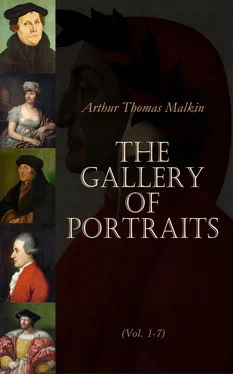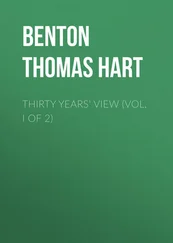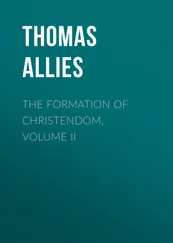The first works executed by Titian after his return to Venice, prove that he had already accomplished that union of grand design with brilliant colouring, which was designated by Tintoret as the highest perfection of painting. His immense picture of the Assumption, formerly in the church of Santa Maria Gloriosa, and now in the Academy of Venice, exhibits, in the opinion of some first-rate judges, various excellences, such as have never been combined in any single performance, but by Titian himself [5]. The Virgin, whose figure relieves dark on the irradiated back-ground, seems to ascend amid a flood of glory. She is surrounded and sustained by angels of ineffable beauty, and the disciples below are personifications of apostolic grandeur. It will scarcely be credited that the Monks, for whom this picture was painted, objected to it on account of its apparent reality; but the voice of public admiration soon made them sensible of its merits, and they refused a large sum offered for it by the Imperial Ambassador. Such a report of this work was made to Leo X. by Cardinal Bembo, that Titian received an invitation to Rome from the Pontiff, with the offer of honourable appointments. A similar proposal from Francis I. of France, whose portrait he painted in 1515, he had already declined; but he yielded to the temptation of visiting Rome, being not less anxious to see the great works of contemporary genius, than the wonders of ancient art. He did not, however, carry his purpose into effect at this time, but remained at Venice; and thus secured to her the possession of those noble works, which, when they were produced, formed the brightest ornament of her power, and even now, when her other glories are set, confer upon her an imperishable distinction.
To recompense in some degree his relinquishment of this invitation, Titian was employed by the Senate to paint the Battle of Cadore, fought between the Venetians and the Imperialists; a splendid production, which perished when the Ducal Palace was burnt. About this time was painted the fine altar-piece of the Pesari Family returning thanks to the Virgin for a victory over the Turks. This picture, as an example of simple grandeur, has been contrasted by Reynolds with the artificial splendour of Rubens; and Fuseli alludes to it as constituting the due medium between dry apposition and exuberant contrast. The sublime picture of S. Pietro Martire was painted in 1523. Of this it is difficult to speak in adequate terms, without the appearance of hyperbolical panegyric. The composition is well known by engravings; but these convey only a faint notion of the original, which unites the utmost magnificence of historical design, with the finest style of landscape-painting. The gorgeous hues of Titian’s colouring are attempered in this picture by an impressive solemnity. The scene of violence and blood, though expressed with energy, is free from contortion or extravagance; grandeur pervades the whole, and even the figure of the flying friar has a character of dignity rarely surpassed. Two pictures on the same subject, the one by Domenichino, in the Academy of Bologna, the other by Giorgione, in our National Gallery, if compared with that of Titian, convey a forcible impression of the difference between first-rate genius and the finest talents of a secondary order. The picture of Giorgione is, however, most Titianesque in colouring.
In 1526 the celebrated satirist Aretine, and Sansovino the sculptor, came to reside in Venice. With these distinguished men Titian contracted an intimacy, which was the source of great pleasure to him, and ceased only with their lives. When Charles V. visited Bologna in 1529, Titian was invited to that city, where he painted an equestrian portrait of the Emperor. Charles, not only an admirer but a judge of art, was astonished at a style of painting of which he had formed no previous conception; he remunerated the artist splendidly, and expressed his determination never to sit to any other master. On returning to Bologna in 1532, he summoned Titian again to his court, and engaged him in many important works, treating him on all occasions with extraordinary respect and regard. It is affirmed, that in riding through Bologna he kept upon the artist’s right hand, an act of courtesy which excited such displeasure among the courtiers that they ventured upon a remonstrance. The answer given by Charles is well known, and has been since ascribed to other monarchs: “I have many nobles in my empire, but only one Titian.” On leaving Bologna, Titian accompanied Frederic Gonzaga, Duke of Mantua, home to his own state; where, besides painting portraits of the Duke and his brother the Cardinal, he ornamented an apartment of the palace contiguous to the rooms painted by Giulio Romano, with portraits of the twelve Cæsars, taking his authorities from medals and antique marbles.
In passing through Parma, on the way to Mantua, he first saw the works of Correggio, who had been engaged in painting the dome of the cathedral. So little was that great man’s genius appreciated, and such was the ignorance of his employers, that they had actually dismissed him as inadequate to the task he had undertaken; nor was he allowed to resume it, until the lavish admiration bestowed on his work by Titian, had taught them better how to estimate his talents.
On returning to Venice, Titian found that a strong party had been raised in favour of Pordenone. He expressed no slight indignation at the attempt to exalt that painter to an equality with himself. Pordenone, nevertheless, was an artist of considerable powers, although certainly not qualified to compete with such an antagonist. The number of pictures which Titian continued to execute, would far exceed our limits to enumerate, and is so great as to excite astonishment; more especially as there is little evidence in his works that he was much assisted by inferior hands. In 1543, when Pope Paul III. visited Bologna, Titian painted an admirable portrait of him, and received an invitation to Rome. But he was unable to accept it, having engagements with the Duke of Urbino, whose palace he accordingly enriched with portraits of Charles V., Francis I., the Duke Guidobaldo, the Popes Sixtus IV., Julius II., and Paul III., the Cardinal of Lorraine, and Solyman, Emperor of the Turks.
Truth, it appears, rather than embellishment, was sought for in the portraits of those days. Titian’s portrait of Paul III. is executed with uncompromising accuracy. The figure is diminutive and decrepit, but the eyes have a look of penetrating sagacity. His Holiness was greatly pleased with it; and, as a mark of his favour, made offer to the artist of a valuable situation in a public department; which Titian declined, upon finding that his emoluments were to be deducted from the income of those who already held possession of it. He obtained, however, the promise of a benefice for his son Pomponio. Aretine thought his friend illiberally treated by Paul, and did not scruple to publish his opinion on the subject.
In 1545, when the Venetian Senate was compelled by the public exigencies to lay a general tax on the city, Titian was the only person exempted from the impost—a noble homage to genius, which attests at once the liberality and the wisdom of that government. In this year, Titian having completed his engagements with the Duke of Urbino, and being, through the Cardinal Farnese, again invited to Rome, determined on a visit to that city; and he set out, accompanied by his son Orazio, several pupils, and a considerable number of domestics. He was received at Urbino by the Duke Guidobaldo II., and splendidly entertained for some days. On his departure, the Duke accompanied him from Urbino to Pesaro, and from thence sent forward with him a suite of horses and servants, as far as the gates of Rome. Here he was greeted with corresponding honours, and lodged in the Belvedere Palace. Vasari was, at this time, in the employment of Cardinal Farnese, and had the gratification of attending the great artist about the city. Titian was now engaged to paint a whole length portrait of Paul III., with the Cardinal Farnese and Duke Ottavio in one group. This picture is at present in the Museo Borbonico; and is a fine example of that highest style of portrait painting, which is scarce less difficult, or less elevated as a branch of art, than historical composition. An “Ecce homo,” painted at the same time, does not appear to have excited that admiration which his works usually obtained. The taste of the Roman artists and connoisseurs had been formed on the severe examples of Michael Angelo, Raphael, Polidoro, and others; so that the style of Titian was tried by a new and conventional standard, to which it was not fairly amenable. It was insinuated that his chief excellence lay in portrait-painting. Vasari relates that, in company with Michael Angelo, he made a visit to Titian at the Belvedere, and found him employed on the celebrated picture of Danae. Michael Angelo bestowed high commendations on it; but, as they went away, remarked to Vasari on Titian’s inaccurate style of design, observing, that if he had received his elementary education in a better school, his works would have been inimitable. Nothing, perhaps, has tended more than this anecdote to give currency to a belief that Titian was an unskilful draughtsman; an opinion which, if tried by the test of his best works, is utterly erroneous. There is not perhaps extant on canvass a more exquisite representation of female beauty, even in point of design, than this figure of Danae; and, with due reverence to the high authority of Michael Angelo, it may be doubted whether his notion of correct design was not tinctured by the ideal grandeur of his own style; which, however magnificent in itself, and appropriate to the scale of the Sistine chapel, is by no means a just medium for the forms of actual nature, nor adapted to the representation of beauty. Michael Angelo however frequently returned to look at this Danae, and always with expressions of increased admiration.
Читать дальше












